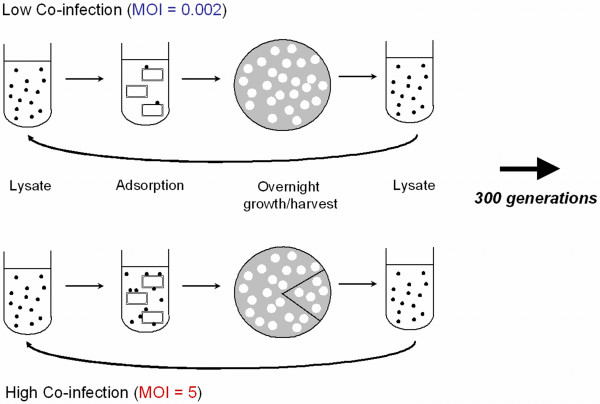Figure 1.
Summary of the propagation schemes for the low and high co-infection treatments in Turner and Chao (1998). Phage (●) adsorbed to bacterial cells (□) at a constant multiplicity-of-infection, and this mixture was used to seed a bacterial lawn. During overnight growth, the viral progeny formed visible plaques (○) which were harvested to create a bacteria-free lysate. Plaques in the low co-infection treatment were produced as the result of single infections, whereas those in the high co-infection treatment resulted from co-infection by two to three viruses (on average). To control for differences in population size across treatments, one-fifth as many plaques were harvested in the high co-infection treatment. See text for details.

